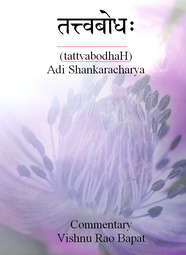The impossibility of ‘Fire being Cold’ is invoked by Shankara at least four times to my knowledge in his bhAShya-s on prasthana trayi. It is not seldom do I find that participants use those words of his in their discussions on Advaita fora on topics concerned with the pramANatva of shruti vAkya. However, either they misquote or partially quote Shankara to bolster their own arguments.
Hence, I propose to gather below the four instances where bhAShyakAra invokes the example of ‘Fire is cold’ and indicates the actual purpose, in his own words, when he cites it.
My general impression is that Shankara would never like to compromise on the ‘supremacy’ of the shruti being the highest pramANa even if its word sounds odd for us, the ajnAni-s. Its word is unquestionably supreme when it reveals something apUrva, not known before, that is something not experienced; maybe the exception being in purely loukika issues within empirical transactions (i.e. “matters lying within the range of pratyaksha” – प्रत्यक्षादिविषये ).
In short, as he says at 3.3.1, BUB, “The authority of the Vedas being inviolable, a Vedic passage must be taken exactly in the sense that it is tested to bear, and NOT according to the ingenuity of the human mind.”
Continue reading





